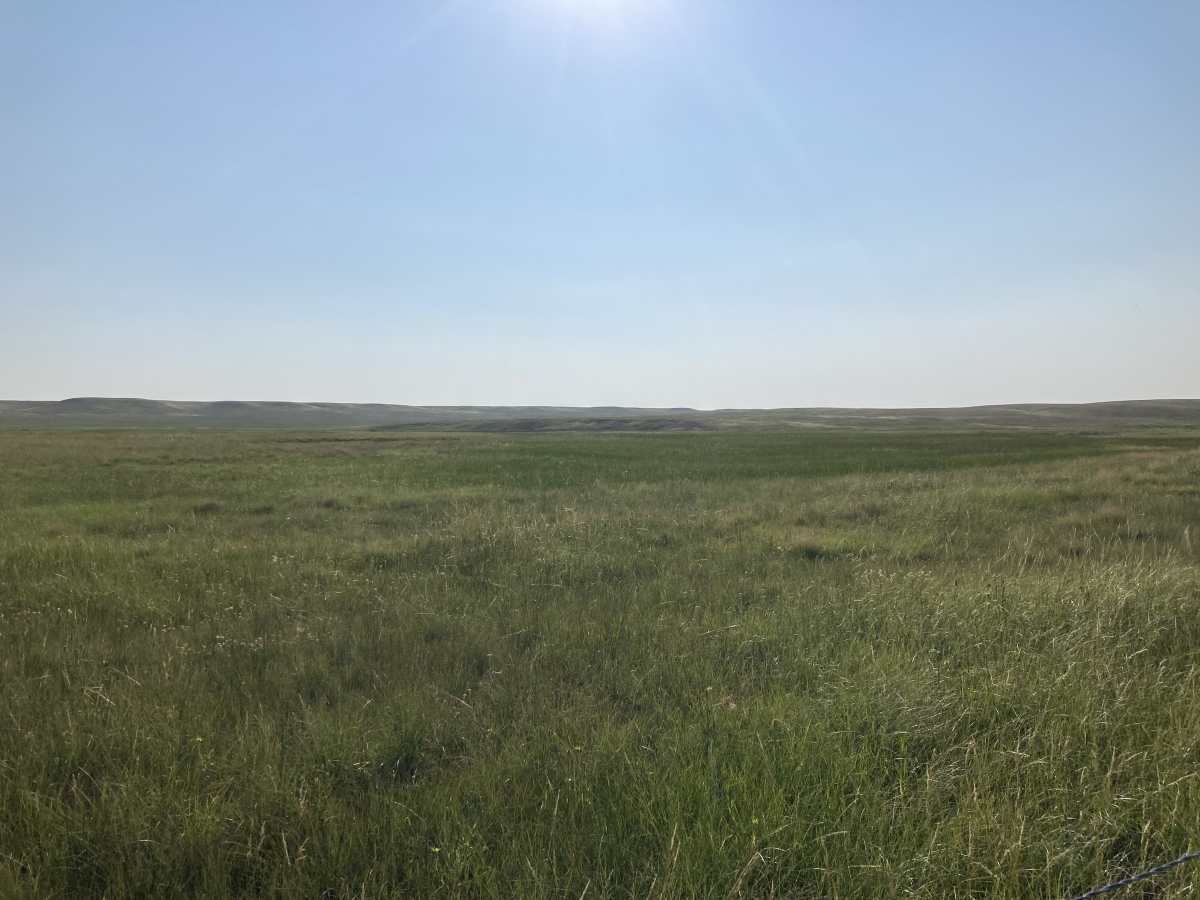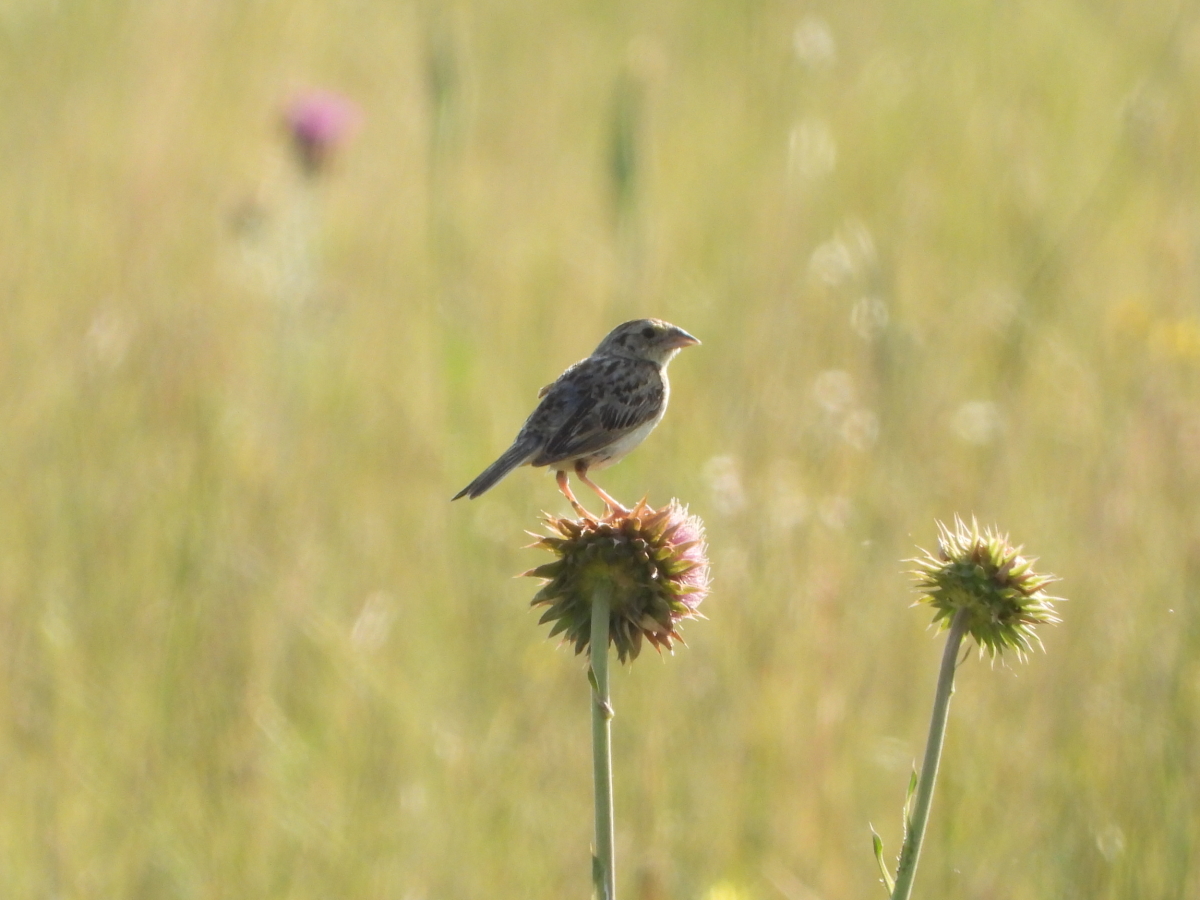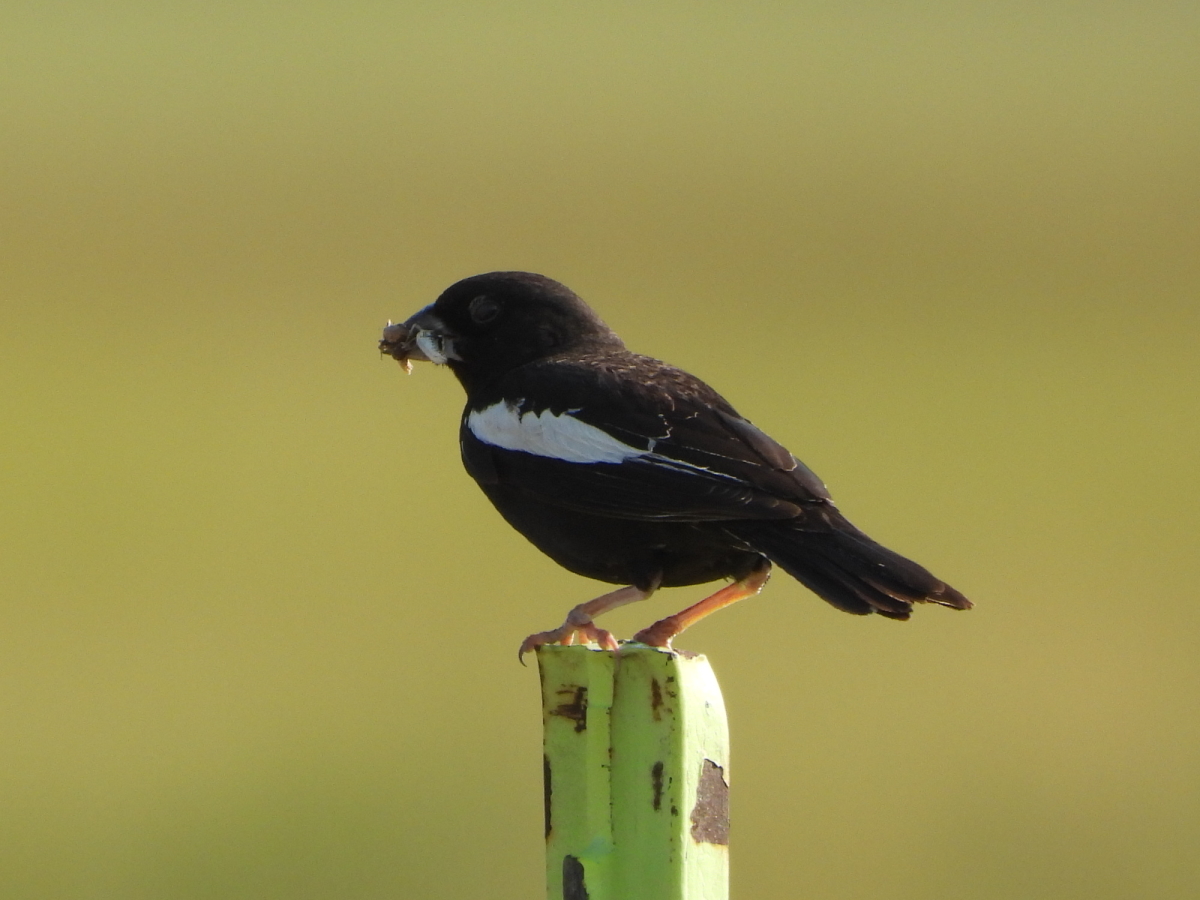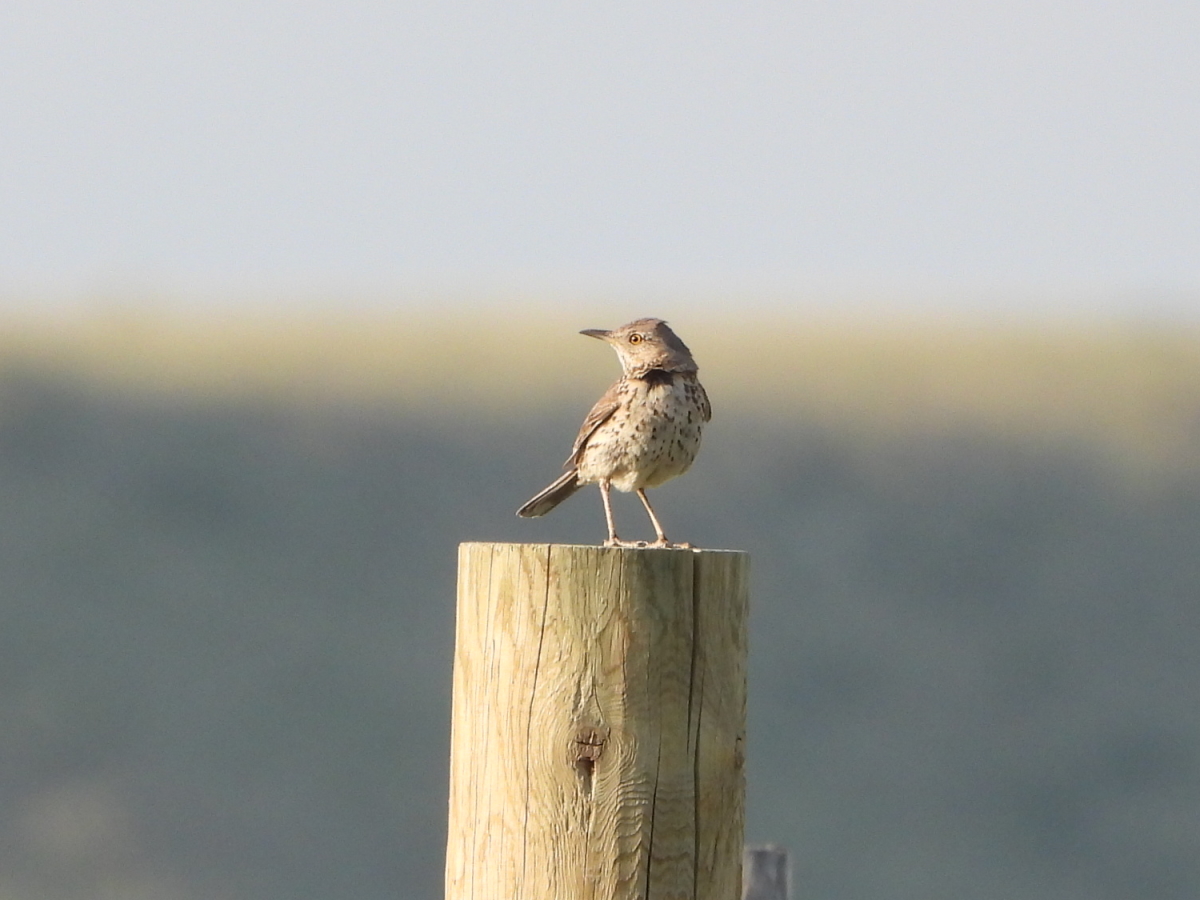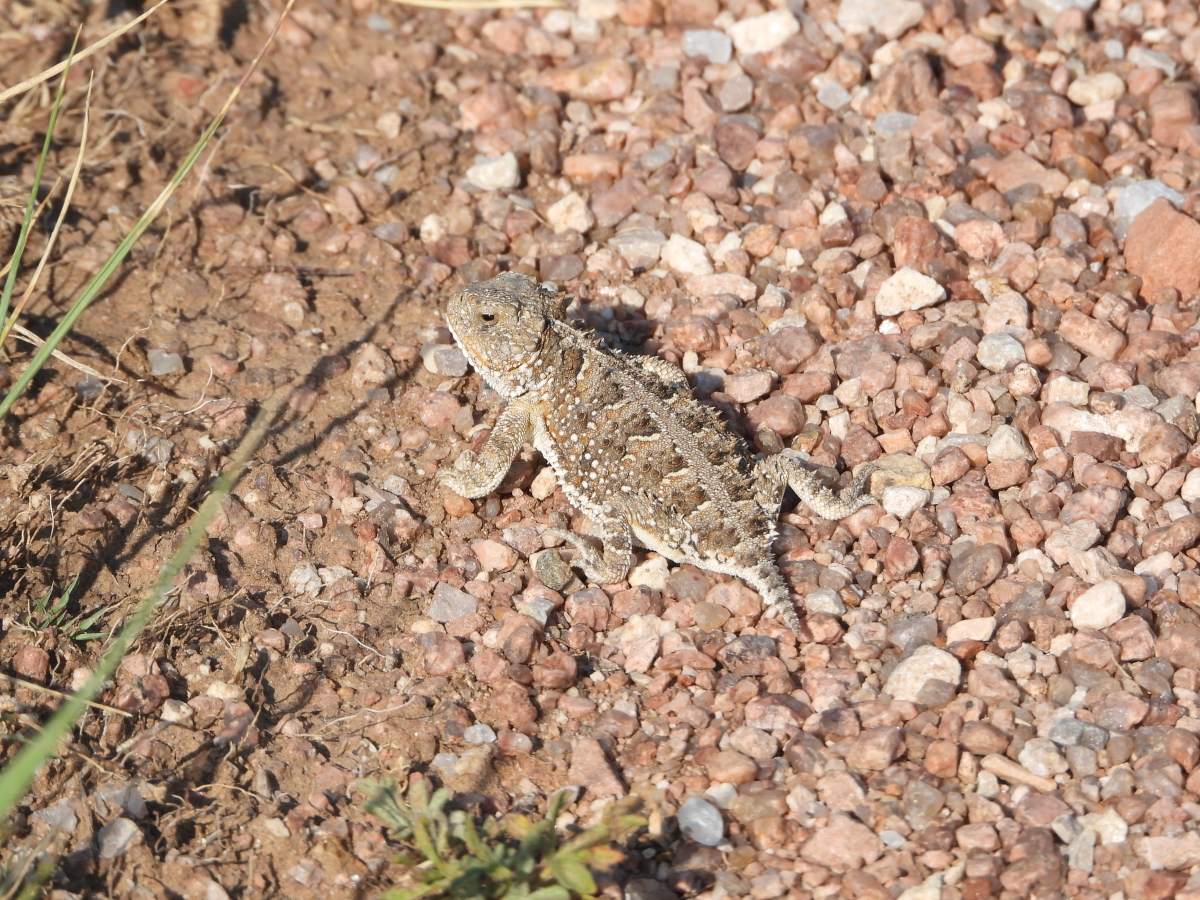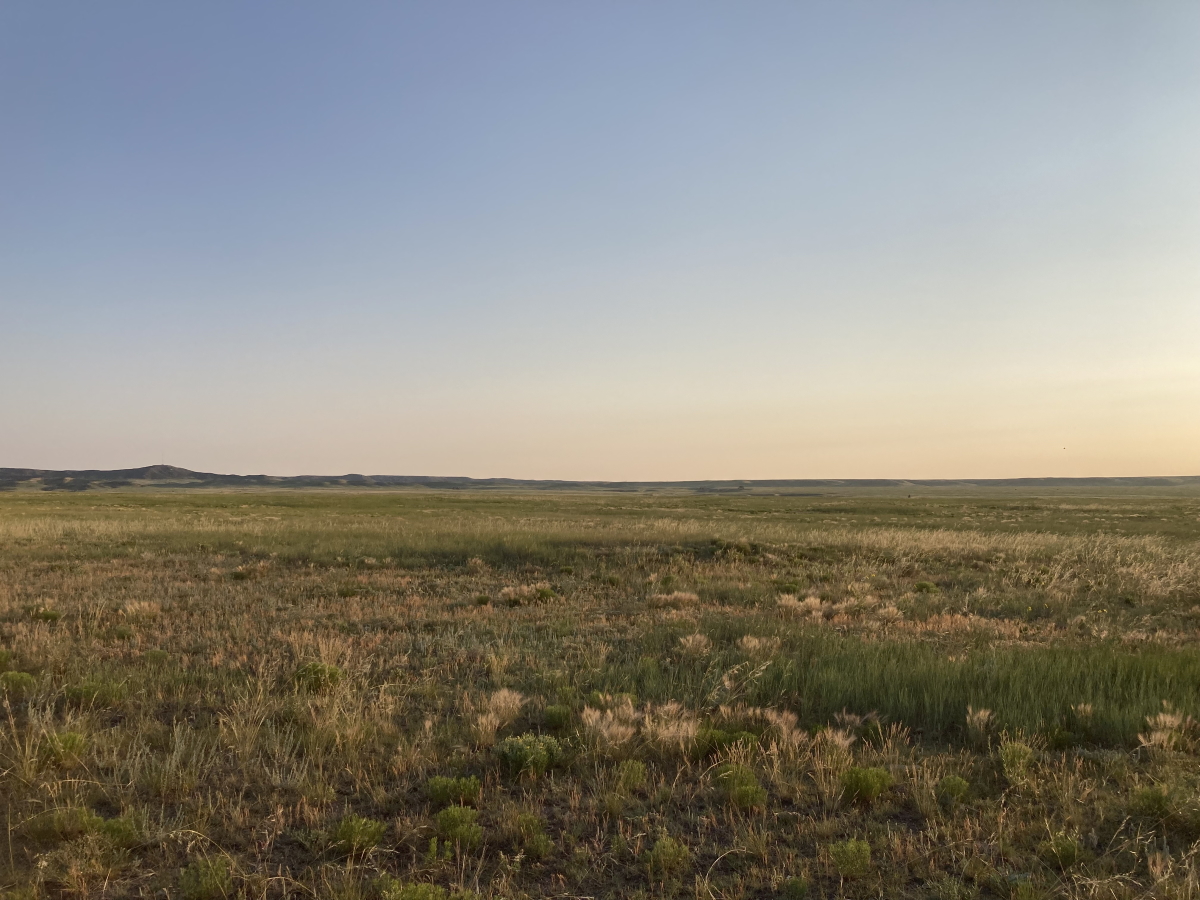Baird’s Sparrow is one of the most difficult sparrows to find in Western North America. They are challenging to locate except during the breeding season when territorial males will sometimes sing their musical song from exposed perches. Uncommon breeders in eastern Montana, North Dakota and Southern Canada, Baird’s Sparrows can be found in large areas of native prairie. They prefer expansive fields of tall grass and scattered weeds. These sparrows have declined by 71% since 1966 due in large part to habitat loss and fragmentation.
Baird’s Sparrows were first detected in Colorado during the breeding season in 2015 and since then singing males have been located every year at Soapstone Prairie Natural Area and other nearby locations. It wasn’t until 2018 that nesting was confirmed in the state for the first time. This apparently new population of breeding Baird’s Sparrows in Northern Colorado (and also several areas in southern Wyoming) are hundreds of miles south of the previously known breeding range of this species. It is currently not clear why these sparrows have taken up residence in Northern Colorado.

